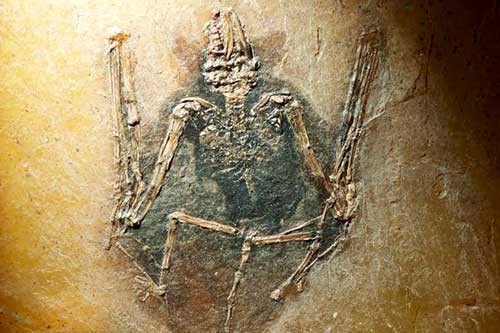Geologists have now discovered a way to determine the color of prehistoric animals based on some fossilized microscopic evidence dating back to 50 million years.
In this breakthrough process, a team of scientists from Virginia Polytechnic Institute and State University and University of Bristol revealed that they can utilize special microscopic structures to indicate the color of fossilized remains of mammals which was first thought to be lost forever. There ancient microscopic sturctures apparently still contain melanin, which also provides human skin and hair its color.
Researchers also found out that ancient bats were a familiar reddish brown where this new finding can help scientists gain a better understanding about how animals looked like during prehistoric times that include frogs, fish, birds, squid and octopus and other mammals as well.
At first, scientists thought that these structures were fossilized bacteria. However, in 2008, lead author of the study Jakob Vinther from the University of Bristol, identified these as melanosomes that also contain melanin in a fossilized feather.
According to co-author of the study Caitlin Colleary of Virginia Polytechnic Institute and State University, melanin is really seen all over this fossil record where the team can confidently base from original color patterns of ancient animals. Scientists also state that melanosomes provide color for dinosaurs and many extinct marine reptiles.
Vinther reveals that the shape of the melanosome provides clues what is the color of the prehistoric animal. For example, if the animal possessed a black pigment, the melanosome would appear like a "small sausage" and if the animal appeared reddish, its melanosome will be shaped like a "little meatball", says Vinther.
However, scientists do not just rely on these melanosome shapes to identify the colors of ancient animals since they can also use chemical markers to verify and compare melanosomes to their cousins in modern day animals. This technology was also discovered to be apparently applicable to mammals as well.
This new study is published in the journal Proceedings of the National Academy of Sciences.



























